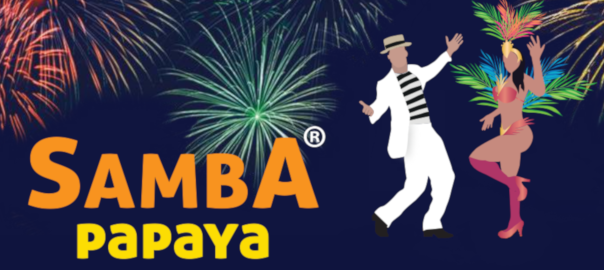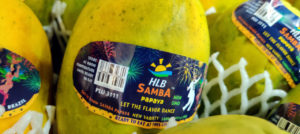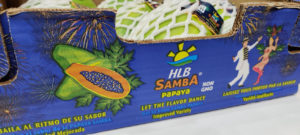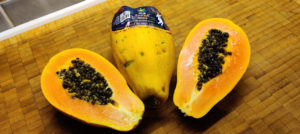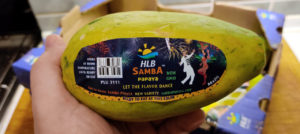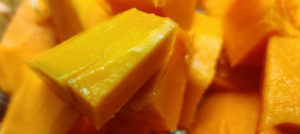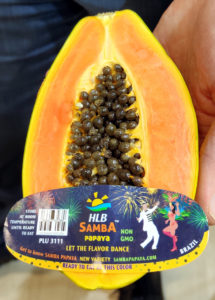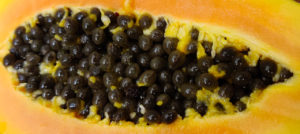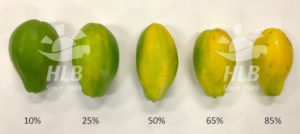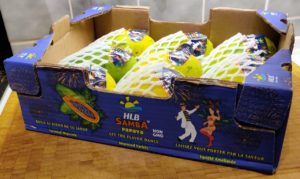Great news for all papaya lovers and those who want to become one – HLB has introduced a new, very special product – the SAMBA Papaya. I have been following this impressive company since my first visit of FRUIT LOGISTICA, because papaya was not really one of my favourite fruit varieties at the time.
Additionally to that, the people at HLB were super friendly, I was impressed by the fact that they put so much effort into checking the quality of the products in such a comprehensible way, no matter what product. It is also good to know that SAMBA, as a Brazilian product, definitely cannot be genetically modified – the GMO (genetically modified organism) is prohibited by law in Brazil.
I found that most of the papayas I tasted always tasted too strong – almost like perfumed – until I tried HLB’s first Organic Formosa from the USA. I was very fond of this papaya – very sweet, but not watery and a great balanced aroma. So here you can see that it’s worth staying on the ball and not “demonizing” everything that doesn’t achieve taste the first, second or third time.
At FRUIT LOGISTICA 2020 it was time to try a new variety of papaya – the SAMBA. The SAMBA’s are a little smaller – handier, so to speak, and available all year-round. Ideal for today’s single households, because how many individuals consume an entire Formosa in one sitting?
If half the fruit has to wait in the fridge, it loses too much of its flavour and Vitamins. The new variety was created by seed selection – the background was that HLB wanted to have an excellent Papaya with their own label in addition to the many exotic fruits.
HLB had more than three decades of experience with Formosa, Organic Formosa or Golden Papaya and now they wanted to bring an even better papaya to the market. Many producers place special emphasis on the appearance of the fruit – HLB enjoys focusing most on taste and consistency, along with appearance. How many consumers wouldn’t prefer a decent looking fruit, but with a fantastic flavour?
The pulp of the SAMBA fruit is much more orange or reddish – the texture is fine-grained and very pleasant – and the taste is much more intense than that of the Golden or Formosa varieties. The BRIX value, a unit of relative density for liquids bound with the sugar content – for example, “normal” melons at the supermarket refrigerated section usually have a BRIX value of 8-12 – even 14 if they are particularly high quality.
The SAMBA typically reaches supermarkets with a BRIX value of 14 or more and is therefore always a nose ahead of the Golden or Formosa varieties in terms of sweetness and flavour.
With the SAMBA, you don’t have to wait until the whole fruit has turned yellow – as soon as the color reaches 60%, the papaya is ready to eat. The consumption-window is much larger, since the fruit is ready-to-eat once it has about 60% color. Due to this the fruit does not put you “under pressure” to consume it quickly before it spoils.
You know, I basically only write about culinary things that surprised or impressed me – that’s the way it is with the SAMBA, try this papaya yourself, then you know what I mean.
